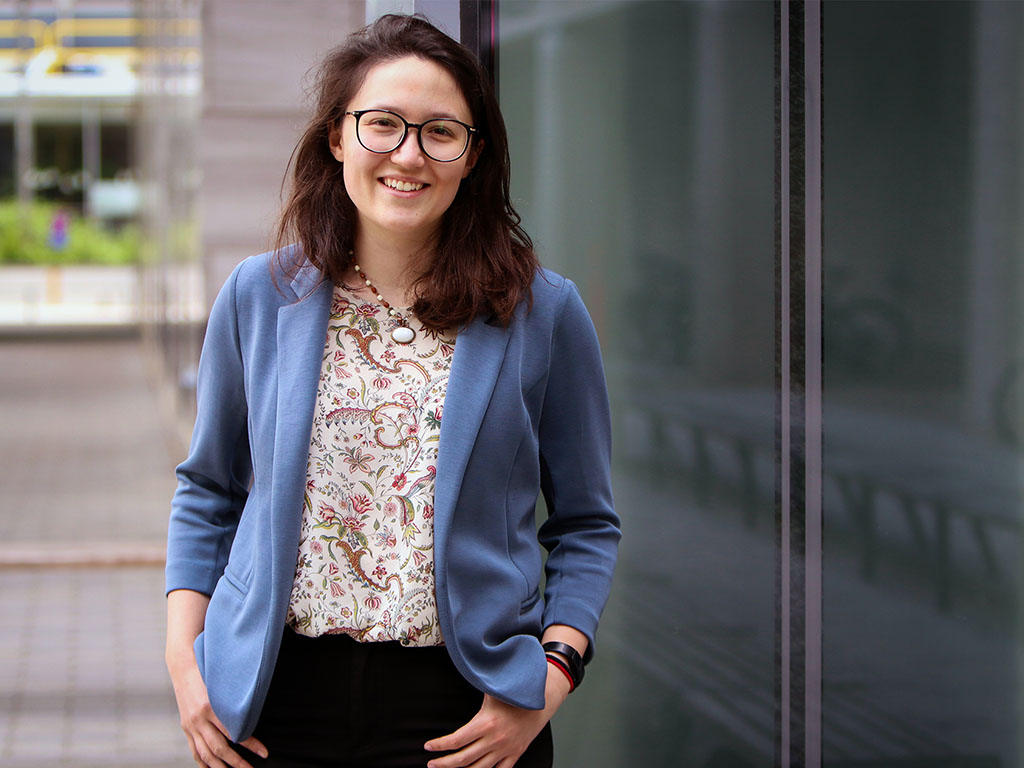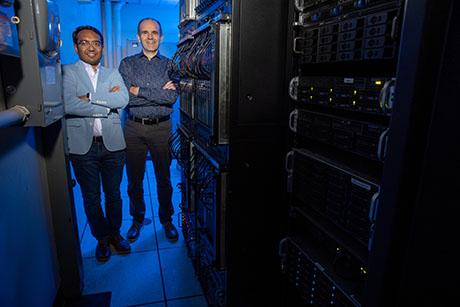Designing exploratory robots that collect data for marine scientists
As the Chemistry-Kayak (affectionately known as the ChemYak) swept over the Arctic estuary waters, Victoria Preston was glued to a monitor in a boat nearby, watching as the robot’s sensors captured new data. She and her team had spent weeks preparing for this deployment. With only a week to work on-site, they were making use of the long summer days to collect thousands of observations of a hypothesized chemical anomaly associated with the annual ice-cover retreat.
The robot moved up and down the stream, using its chemical sensors to detect the composition of the flowing water. Its many measurements revealed a short-lived but massive influx of greenhouse gases in the water during the annual “flushing” of the estuary as ice thawed and receded. For Preston, the experiment’s success was a heartening affirmation of how robotic platforms can be leveraged to help scientists understand the environment in fundamentally new ways.
Growing up near the Chesapeake Bay in Maryland, Preston learned about the importance of environmental conservation from a young age. She became passionate about how next-generation technologies could be used as tools to make a difference. In 2016, Preston completed her BS in robotics engineering from Olin College of Engineering.
“My first research project involved creating a drone that could take noninvasive blow samples from exhaling whales,” Preston says. “Some of our work required us to do automatic detection, which would allow the drone to find the blowhole and track it. Overall, it was a great introduction on how to apply fundamental robotics concepts to the real world.”
Preston’s undergraduate research inspired her to apply for a Fulbright award, which enabled her to work at the Center for Biorobotics in Tallinn, Estonia, for nine months. There, she worked on a variety of robotics projects, such as training a robotic vehicle to map an enclosed underwater space. “I really enjoyed the experience, and it helped shape the research interests I hold today. It also confirmed that grad school was the right next step for me and the work I wanted to do,” she says.
Uncovering geochemical hotspots
After her Fulbright ended, Preston began her PhD in aeronautics and astronautics and applied ocean physics and engineering through a joint program between MIT and the Woods Hole Oceanographic Institution. Her co-advisors, Anna Michel and Nicholas Roy, have helped her pursue both theoretical and experimental questions. “I really wanted to have an advisor relationship with a scientist,” she says. “It was a high priority to me to make sure my work would always be a bridge between science and engineering objectives.”
“Overall, I see robots as a tool for scientists. They take knowledge, explore, bring back datasets. Then scientists do the actual hard work of extracting meaningful information to solve these hard problems,” says Preston.
The first two years of her research focused on how to deploy robots in environments and process their collected data. She developed algorithms that could allow the robot to move on its own. “My goal was to figure out how to exploit our knowledge of the world and use it to plan optimal sampling trajectories,” says Preston. “This would allow robots to independently navigate to sample in regions of high interest to scientists.”
Improving sampling trajectories becomes a major advantage when researchers are working under limited time or budget constraints. Preston was able to deploy her robot in Massachusetts’ Wareham River to detect dissolved methane and other greenhouse gases, byproducts of a wastewater treatment chemical feedstock and natural processes. “Imagine you have a ground seepage of radiation you’re trying to characterize. As the robot moves around, it might get ‘wafts’ of the radiation,” she says.
“Our algorithm would update to give the robot a new estimate of where the leak might be. The robot responds by moving to that location, collecting more samples and potentially discovering the biggest hotspot or cause for the leak. It also builds a model we can interpret along the way.” This method is a major advancement in efficient sampling in the marine geochemical sciences, since historic strategies meant collecting random bottle samples to be analyzed later in the lab.
Adapting to real-world requirements
In the next phase of her work, Preston has been incorporating an important component — time. This will improve explorations that last over several days. “My previous work made this strong assumption that the robot goes in and by the time it’s done, nothing’s different about the environment. In reality this isn’t true, especially for a moving river,” she says. “We’re now trying to figure out how to better model how a space changes over time.”
This fall, Preston will be traveling on the Scripps Institution of Oceanography research vessel Roger Revelle to the Guaymas Basin the Gulf of California. The research team will be releasing remotely operated and autonomous underwater robots near the bottom of the basin to investigate how hydrothermal plumes move in the water column. Working closely with engineers from the National Deep Submergence Facility, and in collaboration with her advisers and research colleagues at MIT, Preston will be on board, directing the deployment of the devices.
“I’m looking forward to demonstrating how our algorithmic developments work in practice. It’s also thrilling to be part of a huge, diverse group that’s willing to try this,” she says.
Preston is just finishing her fourth year of research, and is starting to look toward the future after her PhD. She plans to continue studying marine and other climate-impacted environments. She is driven by our plethora of unexplored questions about the ocean and hopes to use her knowledge to scratch its surface. She’s drawn to the field of computational sustainability, she says, which is based on “the idea is that machine learning, artificial intelligence, and similar tools can and should be applied to solve some of our most pressing challenges, and that these challenges will in turn change how we think about our tools.”
“This is a really exciting time to be a roboticist who also cares about the environment — and to be a scientist who has access to new tools for research. Maybe I’m a little overly optimistic, but I believe we’re at a pivotal moment for exploration.”


